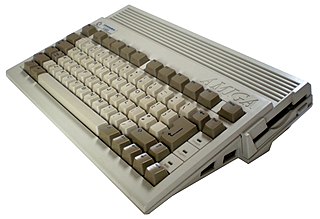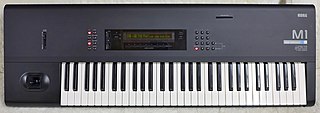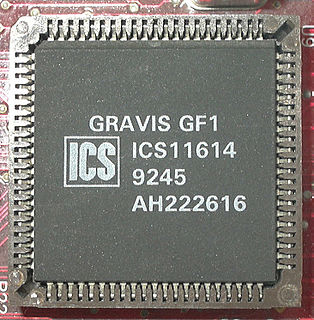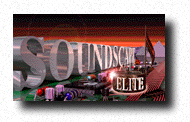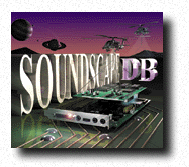
The SoundscapeDB is an Ensoniq-designed and produced MIDI daughtercard designed to interface with the "Waveblaster" pin header available on many older sound cards. It was released in 1994.
Ensoniq Corp. was an American electronics manufacturer, best known throughout the mid-1980s and 1990s for its musical instruments, principally samplers and synthesizers.

MIDI is a technical standard that describes a communications protocol, digital interface, and electrical connectors that connect a wide variety of electronic musical instruments, computers, and related audio devices for playing, editing and recording music. A single MIDI link through a MIDI cable can carry up to sixteen channels of information, each of which can be routed to a separate device or instrument. This could be sixteen different digital instruments, for example.

The Wave Blaster was an add-on MIDI-synthesizer for Creative Sound Blaster 16 and Sound Blaster AWE32 family of PC soundcards. It was a sample-based synthesis General MIDI compliant synthesizer. For General MIDI scores, the Wave Blaster's wavetable-engine produced more realistic instrumental music than the SB16's onboard Yamaha-OPL3.
During the early 1990s, Creative Labs created the Waveblaster connector for their Sound Blaster 16 sound cards. This connector would be for their sample-based synthesis upgrade daughtercard, which they also called the Waveblaster. Other sound card manufacturers took advantage of this and put the connector on their cards as well, and many manufacturers also began developing their own upgrade daughtercards.

The Sound Blaster 16 is a series of sound cards by Creative Technology. They are add-on boards for PCs with an ISA or PCI slot.
Sample-based synthesis is a form of audio synthesis that can be contrasted to either subtractive synthesis or additive synthesis. The principal difference with sample-based synthesis is that the seed waveforms are sampled sounds or instruments instead of fundamental waveforms such as sine and saw waves used in other types of synthesis.
Ensoniq's daughterboard (DB), the SoundscapeDB, is basically a Soundscape S-2000 with the digital sound reproduction section removed. It was simply the MIDI synthesizer (sample-based synthesizer) of the full Soundscape. The DB contained an Ensoniq OTTOR2 synthesizer chip, a Motorola 68EC000 controller, and a 2 MB patch set ROM. Ensoniq switched to a "revised and improved" 1 MB ROM patch set in a cost-cutting move on a later revision of the board.

Soundscape S-2000 was Ensoniq's first direct foray into the PC sound card market. The card arrived on the market in 1994. It is a full-length ISA digital audio and sample-based synthesis device, equipped with a 2 MiB Ensoniq-built ROM-based patch set. Some OEM versions of the card feature a smaller 1 MiB patch set. It was praised for its then-high quality music synthesis and sound output, high compatibility and good software support.
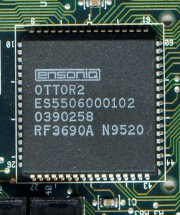
The Ensoniq ES-5506 "OTTO" was a chip used in implementations of sample-based synthesis. Musical instruments and PC sound cards were the most popular applications.
The megabyte is a multiple of the unit byte for digital information. Its recommended unit symbol is MB. The unit prefix mega is a multiplier of 1000000 (106) in the International System of Units (SI). Therefore, one megabyte is one million bytes of information. This definition has been incorporated into the International System of Quantities.

